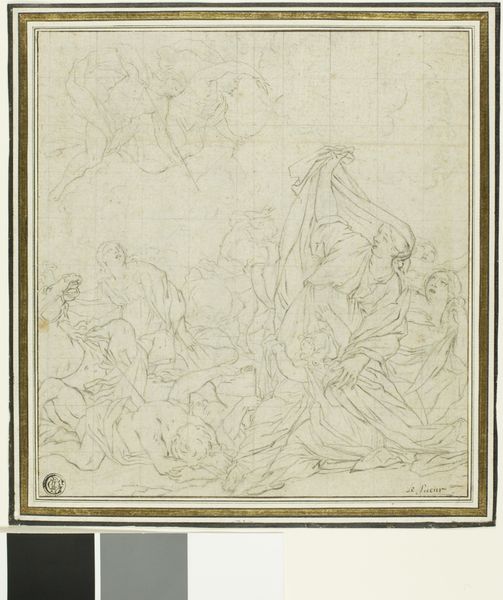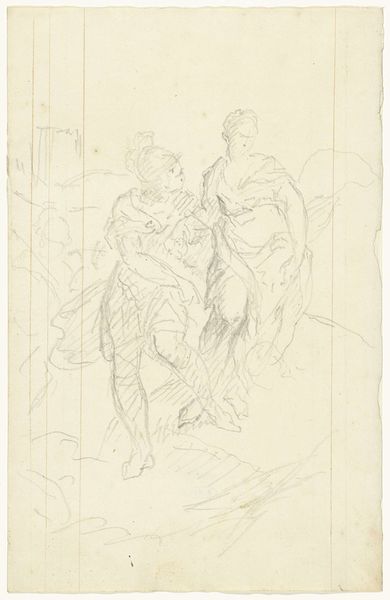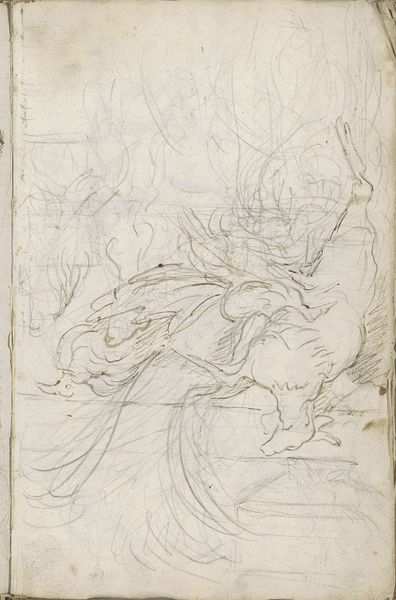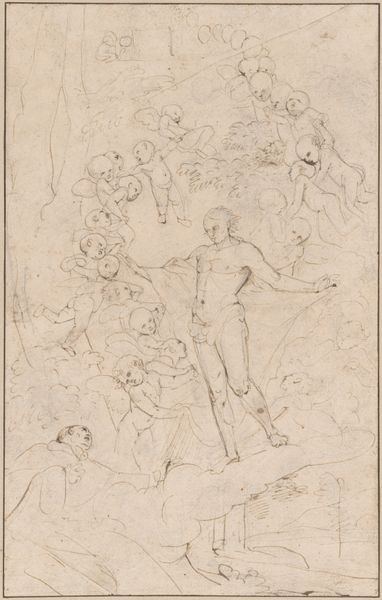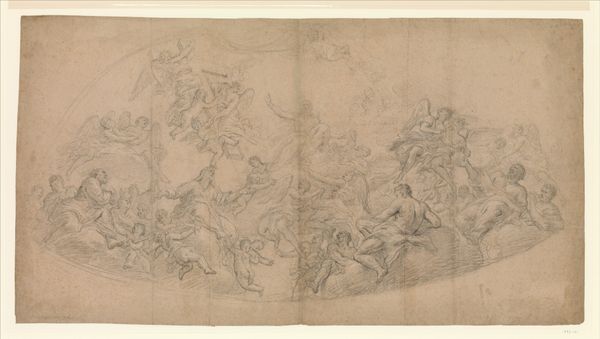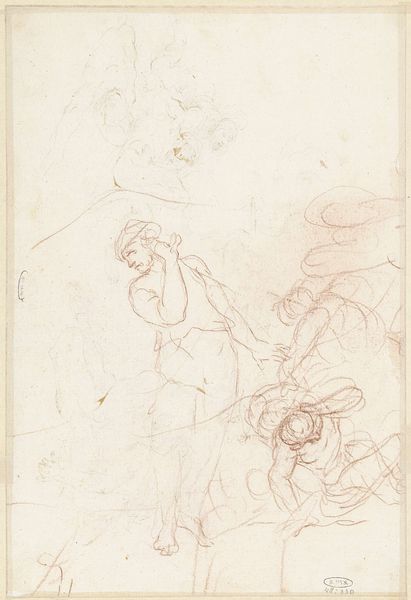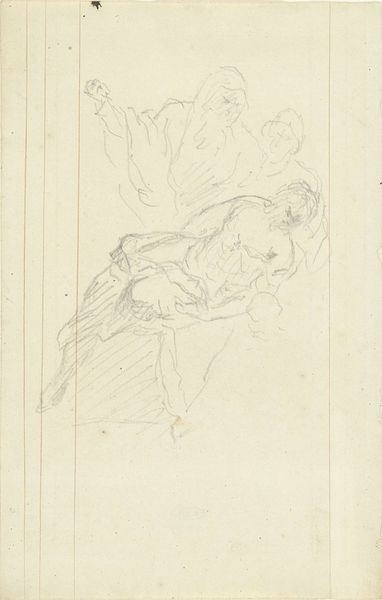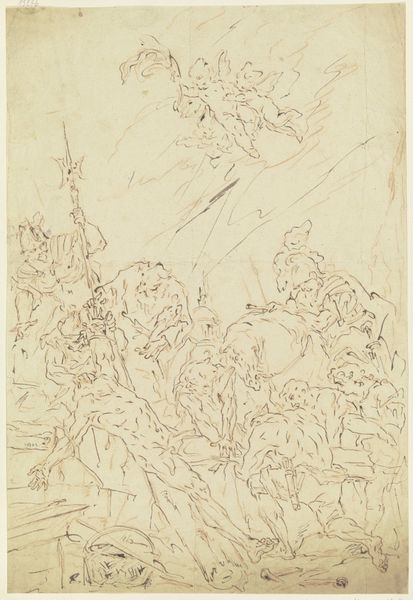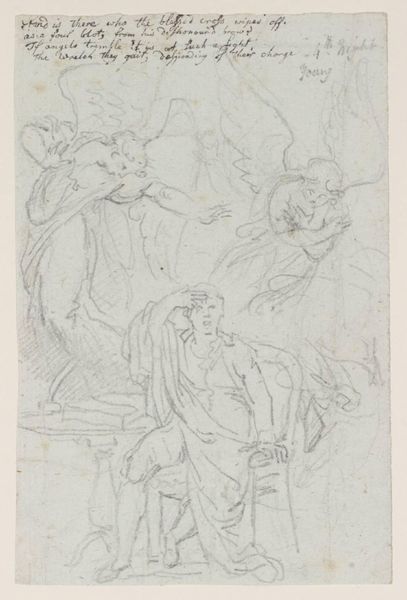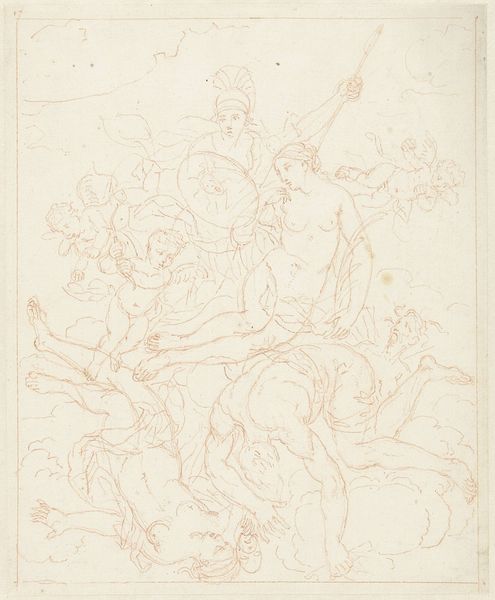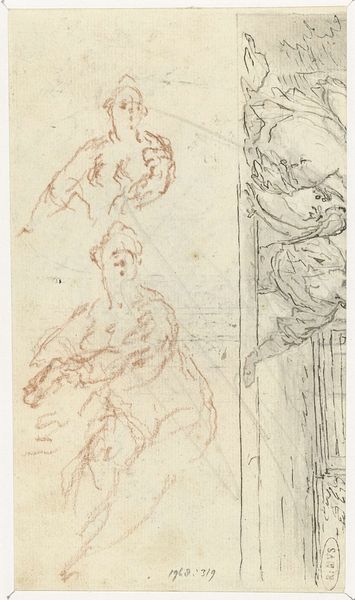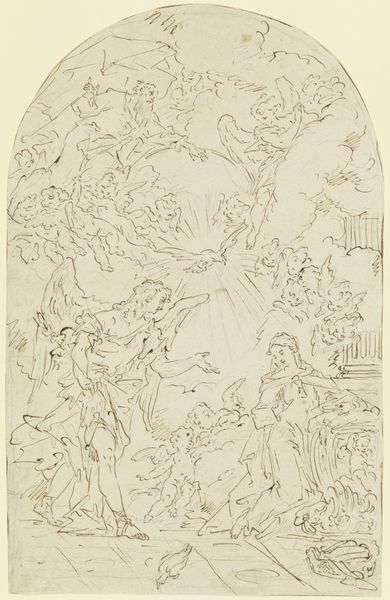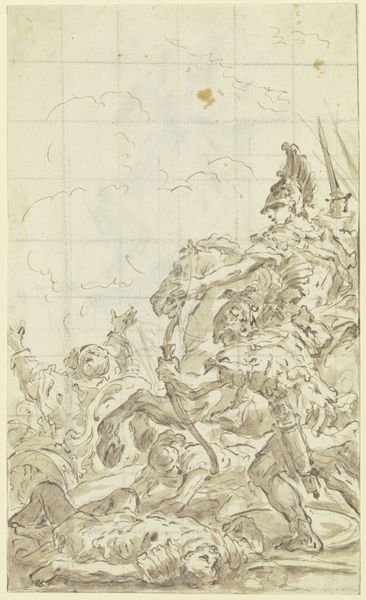
drawing, paper, pencil
#
drawing
#
landscape
#
figuration
#
paper
#
pencil
#
italian-renaissance
Dimensions: height 228 mm, width 193 mm
Copyright: Rijks Museum: Open Domain
Curator: It's so light and airy! Look at these figures, so gracefully rendered... Editor: We are looking at "Dancing Satyrs and Nymphs," a drawing made with pencil on paper attributed to Andrea Sacchi. The Rijksmuseum holds this sketch that the artist probably produced sometime between 1609 and 1661. Curator: I immediately see a reference to classical ideals of beauty and harmony. There is that grid that makes me think it could be preparatory work for a large fresco. What can you tell me about the symbolic meanings in play? Editor: Well, nymphs often symbolize the life-giving forces of nature. And Sacchi's choice of satyrs, those mythological creatures who attend Bacchus, god of wine, points towards themes of celebration, earthly delights and even uninhibited revelry. Even though sketched, the landscape reminds us of Arcadia and its pastoral fantasies of tranquility and innocence. Curator: The art market in seventeenth-century Rome really placed value on these ideal landscapes, no? They are connected to the patronage system... these artists required wealthy art consumers to sustain their practice. The imagery provided escapism. I think its value should be thought in the socio-economic terms that made such imagery popular. Editor: Absolutely. But even independent of that, I believe Sacchi tapped into something primal in the human psyche—the desire to reconnect with nature, to explore sensual freedom, even to acknowledge our wilder sides. What I find striking is the dynamic tension: those ethereal nymphs almost floating as the Satyr’s music brings this emotional charge. Curator: It's a really interesting position, to observe how he balanced the expectation of decorum, and the playful aspects of classical mythology within this drawing. What did wealthy families do with the drawings like this? Editor: Sometimes drawings such as these might be collected and framed, becoming prized possessions. A constant reminder of one’s cultural refinement, education and also an unspoken emblem of status within a specific social milieu. It could easily be presented and gifted, as well. Curator: A fascinating drawing when viewed through its socio-cultural life cycle! Editor: It reveals a great deal about us by the cultural baggage imagery acquires across history.
Comments
No comments
Be the first to comment and join the conversation on the ultimate creative platform.
